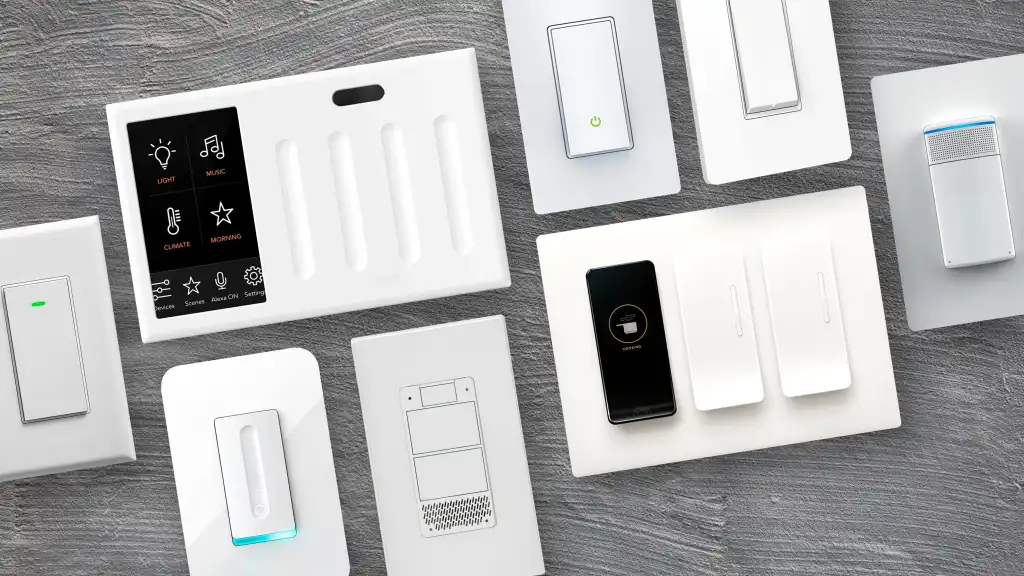
Smart home automation is changing the approach of how we connect with our living spaces in today’s world. In contrast to many smart home appliances, smart switches are crucial for maintaining privacy, energy use, and efficiency. These inventive solutions provide homes to manage devices, lighting and other electrical devices remotely and make daily life easier and more effective.
What Are Smart Switches?
Smart switches are modern electrical switches through which one can remotely manage appliances and lighting through automation schedules, voice assistants, and smartphone apps. They have more characteristics than traditional switches, including energy consumption, dimming control, and interaction with other smart home appliances. They are an integral part of modernized home automation systems as they can link via Wi-Fi, Zigbee, or Z-Wave. Smart switches are a beneficiary addition to any smart home as they offer more control, energy consumption, and security.
The function of Smart Switches in Smart Home Automation
Smart switches are an important part of smart home automation systems, which turn traditional houses into responsive, intelligent spaces. Unlike normal switches, automated switches can be managed by voice assistants, smartphone apps, or automated timetables. You can change brightness levels, switch lights on or off, and even more with just one voice assistant or with just a click on your smartphone you can make your own lighting scenes.
Advantages of Smart Switches
1. Efficient
Using a smartphone application, you can easily control your applications whether you’re at home or away from home. The need to manage lights and other devices manually is not required with the use of smart switches. With the ability to turn lights on and off remotely, you can make the presence of people, which is very useful when you’re on a holiday.
2. Energy consumption and Cost Savings
By managing lighting settings and switching off gadgets when not in use, smart switches can help you conserve energy. To help you observe and improve energy use, some smart switches even have energy-monitoring features. Electricity bills are drastically reduced as a result.
3. Improve Security with Smart Home Monitoring Systems
An additional degree of protection is added by using smart switches with a smart home monitoring system. To prevent potential invaders, motion sensors can be connected to smart switches so that lights would turn on automatically when movement is found. Moreover, you can improve home security while you’re away by setting lights to turn on at specified times.
4.Smooth Integration with Intelligent Home Appliances
Smart locks, security cameras, thermostats, and other smart home devices all work good with smart switches. You can make a networked ecosystem where activities are initiated automatically by establishing automation processes. For example, the thermostat can be set to a pleasant temperature and the lights can be turned on when you go to your house.
5. Voice Control and Customization
Many smart switches can be used with voice assistants such as Apple HomeKit, Google Assistant, and Amazon Alexa. This gives hands-free control, which makes it easy to change lighting without using your hands. Moreover, you can make unique lighting scenarios for various occasions, like movie evenings, dinner gatherings, or bedtime rituals.
Selecting the Right Smart Switch for Your Home
When selecting a smart switch, consider the following factors:
1. Compatibility
Make sure the smart switch works with the rest of your smart home system. While some smart switches could need a specialized hub, others might be incorporated easily with well-known systems like Apple HomeKit, Google Home, and Amazon Alexa.
2. Installation Requirements
Verify the smart switch’s installation needs. While some models don’t need a neutral wire to work, others do. You might need to choose a model made for older electrical systems or get professional installation help if your house lacks a neutral wire.
3. Connectivity Options
Smart switches provide a range of connectivity options, such as Z-Wave, Zigbee, and Wi-Fi. While Z-Wave and Zigbee switches need a suitable hub, Wi-Fi-based switches connect straight to your home network. Choose the option that best meets your needs for home automation.
4. Features
Look for additional characteristics that enhance functionality, such scheduling, energy monitoring, and dimming possibilities. Additionally, some smart switches give multi-user control, providing whole family members to control the switches via cell phones.
5. Design and Aesthetics
To make sure the smart switch complements your home’s decor, take consideration of its appearance and style. For extra convenience, some switches come with LED indicators or faceplates that can be personalized.
6. Privacy and Security
Make sure the smart switch has strong security options like two-factor authentication and encrypted communication. Balancing a secure home automation system needs protecting your smart home appliances from online attacks.
Conclusion
In the field of smart home automation, wireless light switchs are revolutionary. They provide security, easy use, energy economy, and smooth interaction with other smart home appliances. You may have a smarter, more efficient lifestyle and enhance your home automation experience by buying smart switches.
